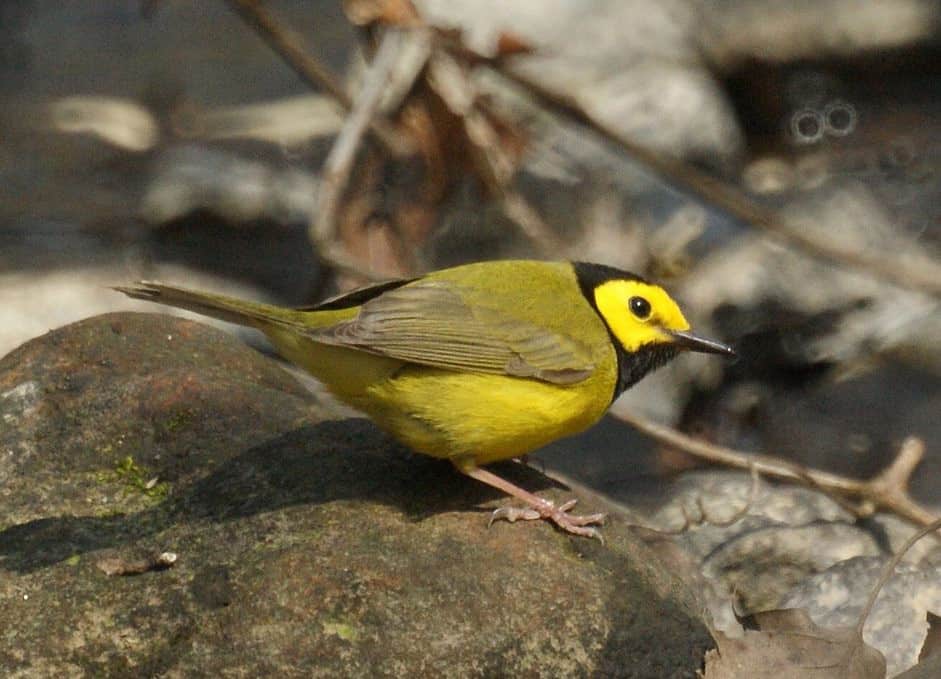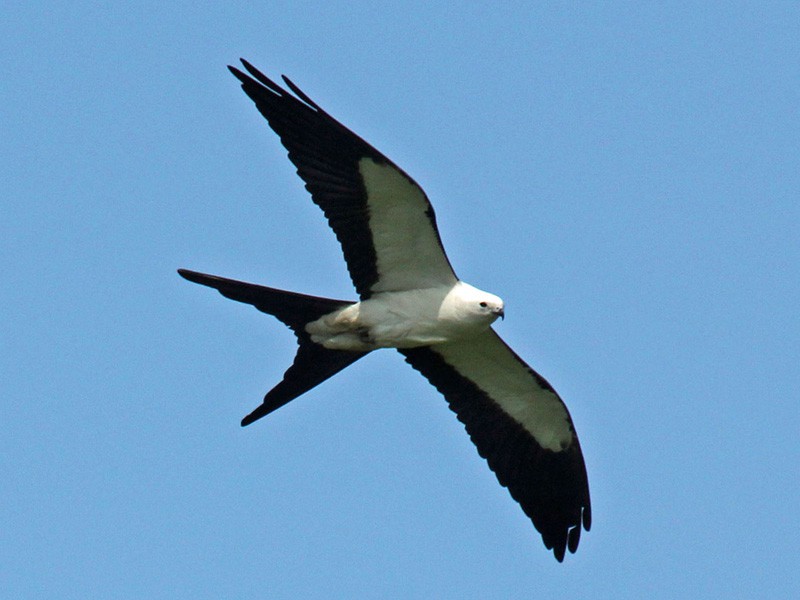Spring Birds of Mississippi (March, April, May)
March: While we should not exclude permanent and those remaining winter residents from our areas of attention, March is most exciting for an almost non-stop assemblage of migrants from the tropics. They run the gamut, from cattle egret, green heron, yellow-crowned night-heron to Mississippi kite and broad-winged hawk, to American golden plover, to solitary, spotted, upland, pectoral, and semipalmated sandpipers.
Most of the foregoing will begin arriving in the coastal counties in early March, spend a few days or even longer, and then make a steady progression northward (for some that is the tundra and even beyond it).
Open lands of the Delta, below the levees of the Mississippi River, catfish farms throughout the state, reservoirs when water levels are low, sod farms and pastures are good places for viewing many of the birds we call “shorebirds.” Heavy rain serves to put airports, golf courses, and similar areas on a list of potential bird watching sites.
Several terns begin to arrive in March; Sandwich and gull-billed terns are mostly confined to the coastal area while least terns may stay on coastal beaches to nest or continue north to nest on sandbars along larger rivers.
The songbirds that nest over much of North America (including southern Mississippi) also begin to arrive, and many of the earliest will stay to nest; great crested flycatcher, yellow-throated vireo, cliff swallow, prothonotary warbler, summer tanager, blue grosbeak, and orchard oriole are just a few of them.
Exactly where and when birds arrive in any given region of Mississippi is not predictable. To understand that, one needs to understand that weather plays a major role during migration, especially in spring. Migrants from the tropics keep their own timetables. The majority of them are trans-gulf migrants; they time their departure to take advantage of good flight weather at their take-off point, the Yucatan Peninsula, the nearest land mass for birds migrating to and from the tropics and the Northern Gulf Coast).
Should fair skies and moderate south winds continue as they near the coastlines of Mississippi and neighboring states, all but individuals that nest locally will continue to fly northward for one or even two-hundred miles or more before stopping, while the locals seem to go directly to traditional nesting areas with few, if any, stops for food or rest along the way.
It is in periods of generally fair weather that bird watchers from Natchez, Vicksburg, Jackson and points north will log in arrival dates that are earlier by a week or more than arrivals in the southern counties. On such fair days, migrants are fairly widespread throughout much of Mississippi north of the coast and concentrations of them are small.
A rainy and windy low pressure system (a norther) that reaches south into the Gulf of Mexico has the opposite effect. Birds caught by adverse weather while still far from land undergo an endurance test that often ends badly. Birds with chilled bodies and wet feathers must continue to fly into buffeting headwinds towards landfall. Often, they burn up the caloric fuel with which they began the flight and then begin to burn their fat reserves Some may actually have reached a point of no return; they are grounded and helpless. Others will recover and go on. When the preceding events take place, they produce what is called “a fall-out” wherein hundreds and hundreds of birds are on the ground or at eye-level and too exhausted to move.
If there is a “best place” to be when such an event occurs, it is a migrant trap, an area that is the first landfall for trans-gulf migrants. Here in Mississippi, the barrier islands, about 12 miles offshore, are migrant traps in the truest sense, tending to concentrate birds within a relatively small area.
On the immediate coast, there are several “secondary” migrant traps; they are not isolated from other vegetated areas and bird concentrations are not as great; incoming birds may stay for a day or two until the weather clears, then tend to eat their way northward. From east to west: Grand Bay Savanna NWR, Bellefontaine Beach, Gulf Islands National Seashore at Davis Bayou, all in Jackson County, Beauvoir and Clower Thornton Nature Trail in Harrison County, and the Coastal Preserve at Ansley in Hancock County. Bottomlands of the Pearl and Pascagoula Rivers are also productive of birds after a major fall-out.
Fortunately, there is a middle ground. A gentle north wind or a rain shower tends to precipitate migrants in smaller numbers. When rain and wind combine, bird watching is at its best, and migrant birds are lively. At such times one’s own backyard may become a hotbed of bird activity. The scenario repeats itself throughout all areas of the state.
April: There is greater species diversity in April than any other time; some winter visitors are slow to leave; summer residents are arriving, and birds that are known as transients take center stage. Transients are passers-by in Mississippi; since there are limited time frames during migration in which to see them, they are prized among bird watchers. Some typical transients include American golden-plover, buff-breasted and upland sandpipers, alder flycatcher, Philadelphia vireo, magnolia and Blackburnian warblers, rose-breasted grosbeak, and bobolink.
As a general rule bird-watchers find transients in most of the sites listed throughout, but as the name implies, a migrant trap remains the best of the coastal sites. The weather systems that produce dramatic fall-outs happen most often in mid to late April. Watching for shorebirds, and by that we mean plovers, sandpipers, and similar species with strange –sounding names, are among the most sought after, especially at inland locations. One of the most productive of them is the A&D Turf Farm, about 7 miles south of Oxford and just west of the Intersection of Highways 7 and 14. Other good areas are the pasturelands of the Delta, and the low and fertile lands below the levees all along the Mississippi River. Shorebirds also frequent the larger lakes and reservoirs; naturally one looks for them when water levels are low, resulting in exposed flats.
May: Spring migration continues in May; in the coastal counties it may appear to be over, but it is not. Even larger numbers of some wanted species are among the last to pass through. Those who leave the bird watching theater before the final credits have rolled may miss birds such as the white-rumped sandpiper, black-billed cuckoo, or mourning warbler. A visit to Tishomingo State Park or any other of the aforementioned sites, especially in the northern two-thirds of the state, should provide ample opportunities for finding transient species even late into the month.
By May virtually all species that nest within the state are well into that activity, and may already have produced a first or even second clutch. Birds sing more persistently in the breeding season, which makes May an ideal month for learning the songs and calls of our nesting birds.
For that activity, it is very important to get out into the field early. Almost all birds sing in the half-hour before dawn. It may seem that all are singing at the same time, but once the dawn chorus subsides, it becomes easier to track down a singing bird. A look at a singing bird helps to put song and bird together in your mind and memory. Keep in mind that not more than a couple of dozen individuals are likely to be singing in the same general area.
Species associated with pine woods are limited, as are those of bottomlands, mixed woodlands, open areas, and other broad habitats. For example, when in pine woods, listen for these typical species: northern bobwhite, red-bellied and downy woodpeckers, eastern wood-pewee, eastern kingbird, blue jay, American crow, brown-headed nuthatch, eastern bluebird, pine warbler, summer tanager, eastern towhee, blue grosbeak, and orchard oriole. In the northern part of the state, pine woods habitats are absent of species such as brown-headed nuthatch and more productive of species such as chipping sparrows.




